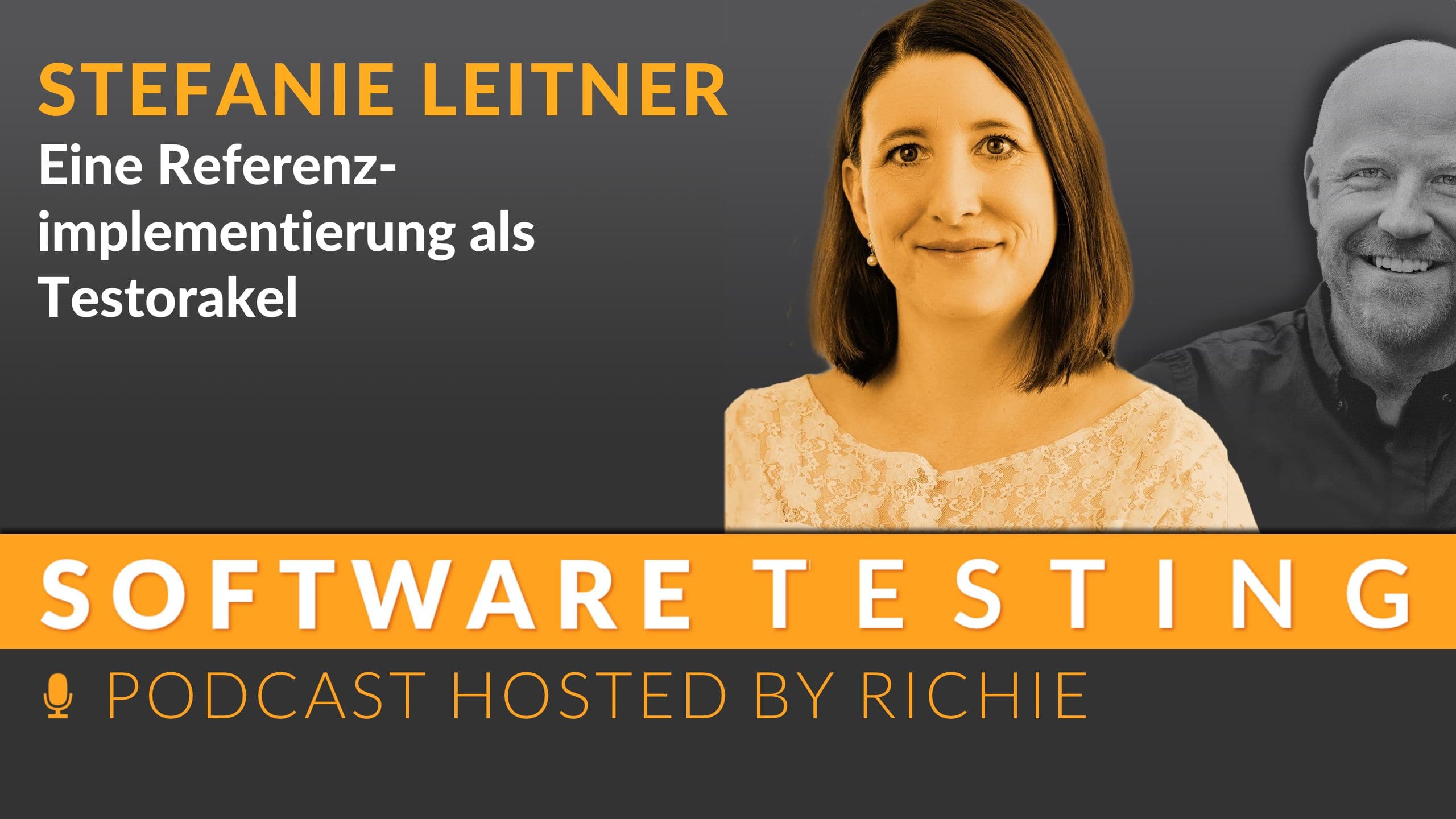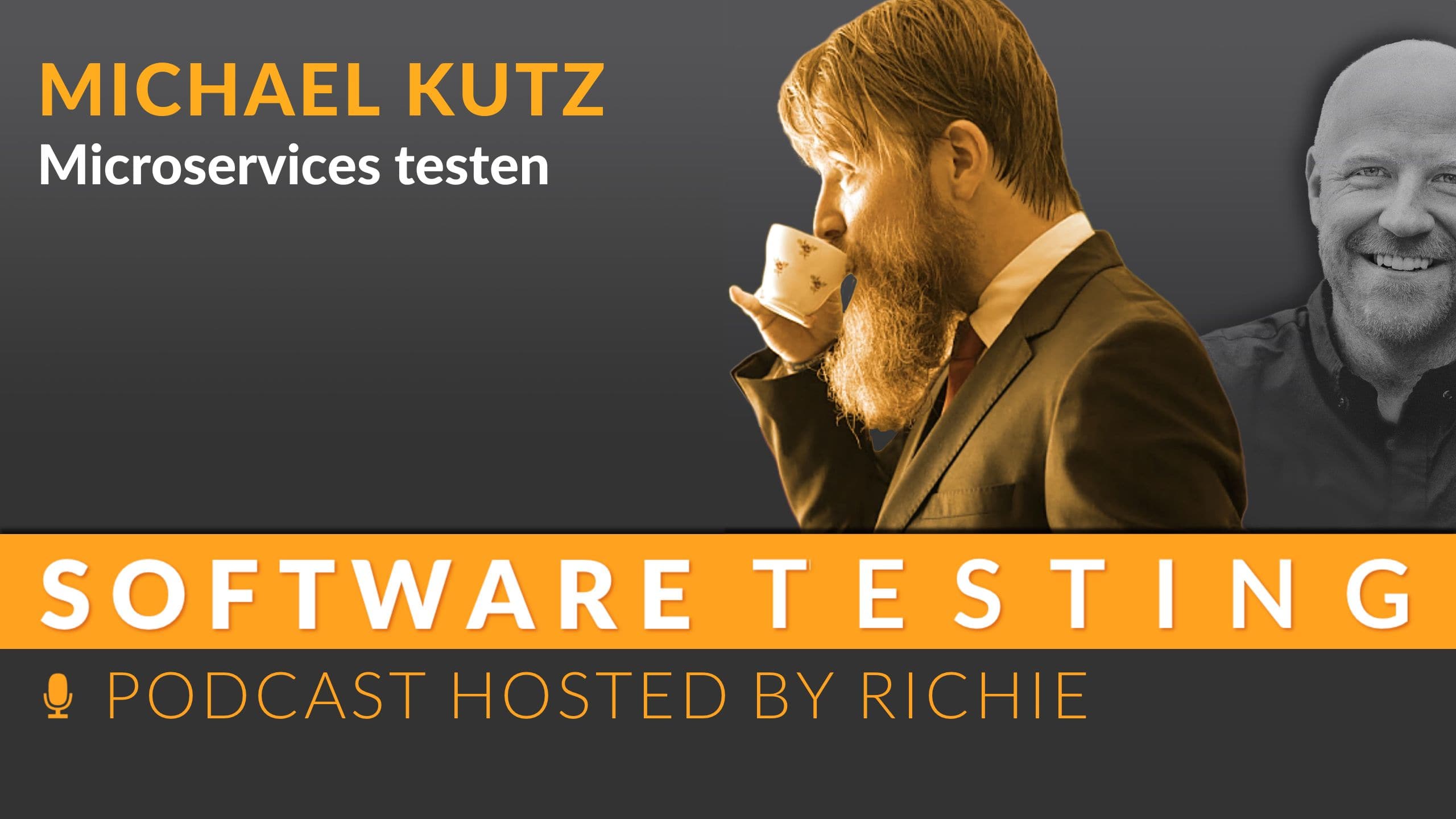Implementation as a test oracle
Autonomous driving functions and safety-critical systems need to be thoroughly tested in the automotive industry. An efficient way to ensure quality...

The introduction of agile test plans in a classically structured federal authority shows how even complex organizations can break new ground. Initiated by an acute need for action, a modular testing and quality assurance toolkit system was created that provides practice-oriented knowledge in line with requirements - from basic articles and videos to concrete exercises. A community of practice supports the exchange between project participants and promotes the transfer of knowledge within the organization. Rigid documentation is replaced by application-oriented solutions that motivate cooperation and take different types of learners into account. Step by step, this creates a change that is not based on system architecture, but on shared understanding and genuine collaboration.
In this episode, I talk to Simone and Oliver from the Federal Office of Administration about a topic that sounds dry, but has a lot of spice: Test plans. If you're thinking of meaningless wastelands of text, you're wrong. The two show how to find agile, lightweight approaches even in a public authority environment with over 100 specialist procedures and a strict framework. Their QA toolkit is more of an info point than a catalog of regulations - modular, practical and easy to understand. Sharing knowledge, breaking down silos and driving real change. And the whole thing is now open source.
"At some point, we refused to write heavyweight concepts that end up in a drawer." - Simone Mester, Oliver Kortendick
Dr. Oliver Kortendick studied ethnology and sociology in Göttingen, Amsterdam and Cologne. Doctorate and subsequent several years of research on quantitative, computer-aided content analysis. Research Fellow at the Center for Social Anthropology and Computing in Canterbury, Kent. For 25 years as a software developer, project manager and testing and QA manager in large-scale projects. Since 2015, strategy consultant for software testing and quality assurance at the Federal Office of Administration in Cologne.
Simone Mester looks back on many years of experience as a software developer in the insurance environment, but in recent years she has been drawn to the "test and QA" side. She has been working in the public sector since 2015. Special interest: Lightweight processes to support team building and group coherence in an agile approach. Co-founder of the Community of Practice "Forum for Test and Quality Assurance" at BVA, co-moderator of the CoP "Test and QA" of the federal Next network.
In many organizations, test strategies are still associated with rigid rules, extensive documentation, and lengthy approval processes. However, in today’s fast-paced environments—where requirements can shift rapidly—such approaches are often no longer effective. What’s needed are lightweight, comprehensible, and modular test strategies that support rather than hinder development teams.
Lightweight test strategies focus on the essentials. They prioritize pragmatic, easily implementable solutions over comprehensive documentation. Agile methods enable teams to respond flexibly to changing requirements and enhance collaboration. Knowledge is not siloed but actively shared—often through Communities of Practice, where teams exchange ideas, learn from one another, and evolve together.
A critical element of lightweight test strategies is traceability. It must be considered from the outset, as implementing it retrospectively can be time-consuming and inefficient.
Agile methodologies play a crucial role in modern test processes for several reasons:
Conventional test strategies are often characterized by inflexible processes and long documentation cycles. Frequently, important information is neither communicated effectively nor used productively. To optimize testing in dynamic environments, it is essential to identify process bottlenecks—those areas where existing structures are too cumbersome or ineffective. Only then can targeted improvements be made.
The public sector, in particular, faces unique challenges: bureaucratic structures, complex hierarchies, and rigid processes often stand in the way of agility and efficiency. Traditional methods like the V-model often prove impractical in these settings, especially when requirements change frequently.
Agile transformation offers a compelling alternative, allowing organizations to work more flexibly and respond more swiftly to change. Iterative processes improve both efficiency and transparency. Moreover, agile practices foster shared responsibility for product quality through a strong emphasis on team collaboration and collective understanding.
Implementing lightweight test strategies within the public sector can significantly enhance responsiveness and effectiveness. Rather than relying on extensive handbooks, these approaches focus on actionable, streamlined solutions—such as a minimum viable test strategy.
To support agile practices in public administration, the QA Toolkit provides a modular framework tailored for governmental use. Its key advantages include:
Unlike traditional manuals—often extensive and rarely consulted in practice—the QA Toolkit offers a user-friendly and flexible alternative.
Communities of Practice are a key enabler of agile transformation. They promote structured knowledge exchange and help teams share insights and best practices. Regular discussions encourage the exploration of different perspectives and foster cross-functional learning.
Sharing lessons learned across teams and departments is essential. Drawing on real-world project experiences—both successes and failures—helps build a stronger, more resilient knowledge base.
Traceability is a foundational element of any robust test process. A structured approach like the QA Toolkit allows clear mapping between requirements and test cases, highlights gaps in test coverage, and improves communication between teams. Addressing traceability early reduces the effort required during later phases of the project.
It is also important to integrate various test levels, providing structure and ensuring all relevant aspects of the software are adequately tested.
The QA Toolkit enables self-assessment and maturity evaluation across teams. Modules can be used to assess the current testing landscape and identify areas for improvement. Maturity models help teams track progress across various test dimensions.
How does this improve the test process?
This iterative process improves not only test quality but also fosters team engagement and a culture of continuous improvement.
Introducing lightweight test strategies in large organizations—especially in the public sector—can pose several challenges:
Multi-level decision-making processes often slow down innovation and change.
The desire for uniform processes frequently results in inflexible regulations that are incompatible with agile practices.
When test knowledge resides primarily with external vendors, internal teams may struggle to engage fully in the learning and improvement process.
These challenges can significantly limit agility. Open communication and flexible implementation strategies are therefore vital for successful transformation. In this context, it is also worth examining the evolving role of test managers in agile projects.
The introduction of the QA Toolkit has led to measurable improvements:
These examples highlight how agile methods and lightweight test strategies can increase not only operational efficiency but also team satisfaction and commitment.
Lightweight test plans are simplified approaches to testing that are geared towards modern software development teams. They are important because they offer flexibility and adaptability, which is crucial in agile environments.
Agile methods promote an iterative and collaborative approach that enables teams in the public sector to respond more quickly to change and increase the quality of software through continuous feedback.
Traditional testing methods are often rigid and bureaucratic, leading to delays and insufficient adaptability. Agile approaches, on the other hand, allow for a faster response to requirements and promote collaboration between team members.
A QA toolkit is a modular approach that integrates test strategy, test design procedures and traceability. It provides a user-friendly structure that helps teams to plan and execute tests more efficiently.
Communities of practice promote the exchange of knowledge between different projects and departments. They support teams in sharing best practices and exchanging experiences, which contributes to the successful implementation of agile methods.
A QA toolkit enables self-assessment and maturity measurement of teams. By taking concrete steps towards continuous improvement, organizations can optimize their test processes and sustainably increase the quality of their software.

Autonomous driving functions and safety-critical systems need to be thoroughly tested in the automotive industry. An efficient way to ensure quality...

User interface testing is crucial for the overall quality of software and its user experience. . Web component testing can be used to ensure that...

The transition from monolithic systems to a microservice architecture brings with it various challenges, particularly with regard to optimizing the...